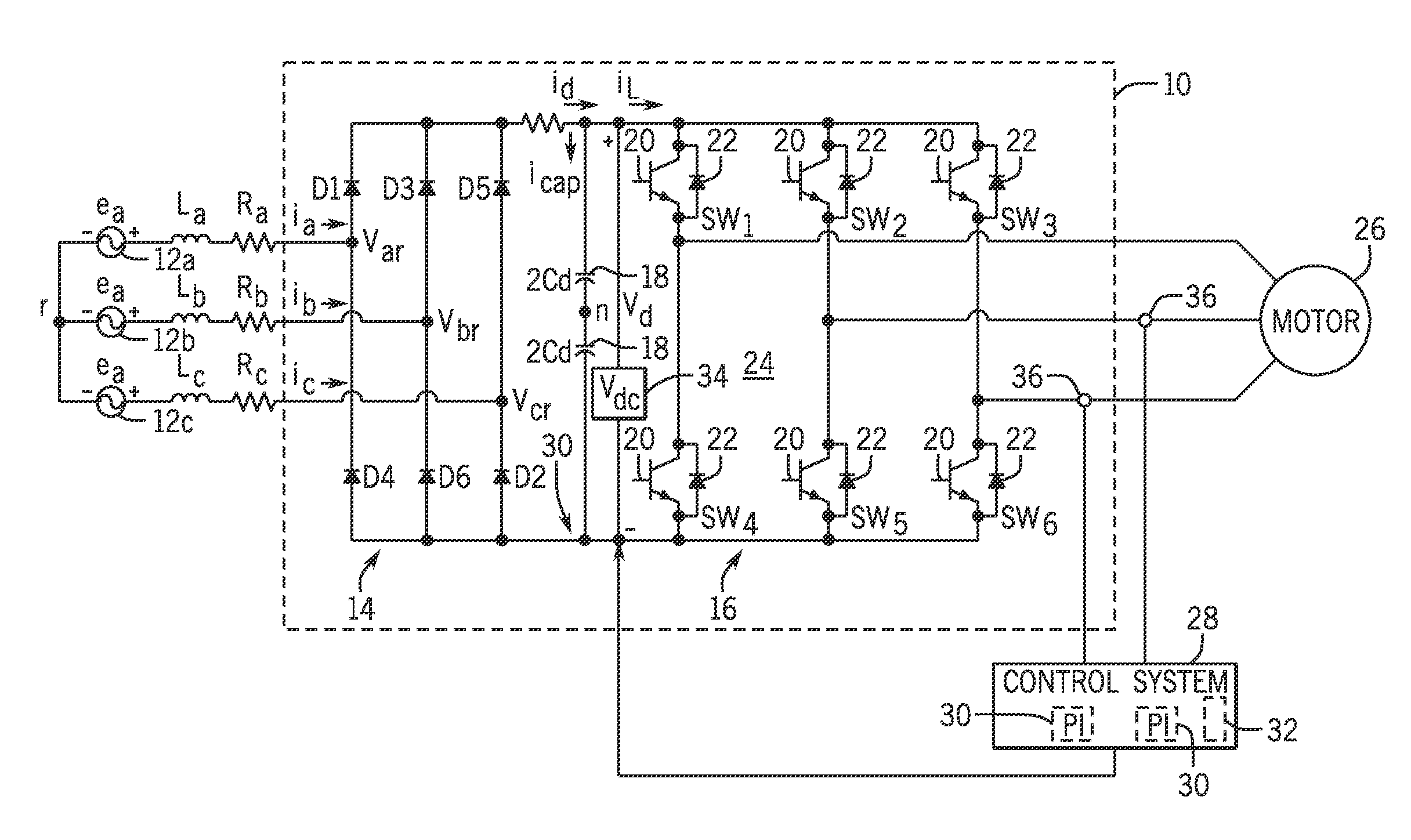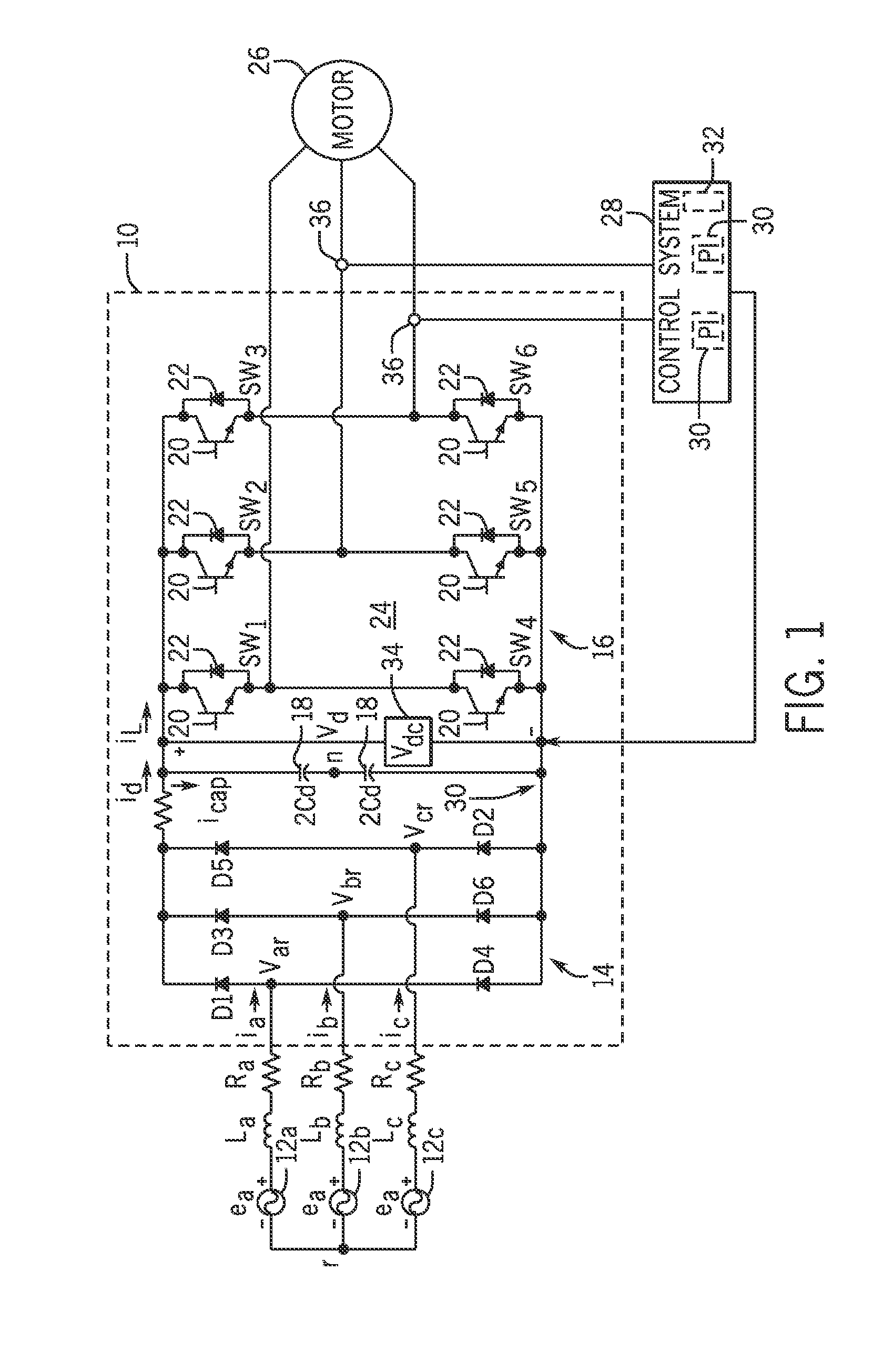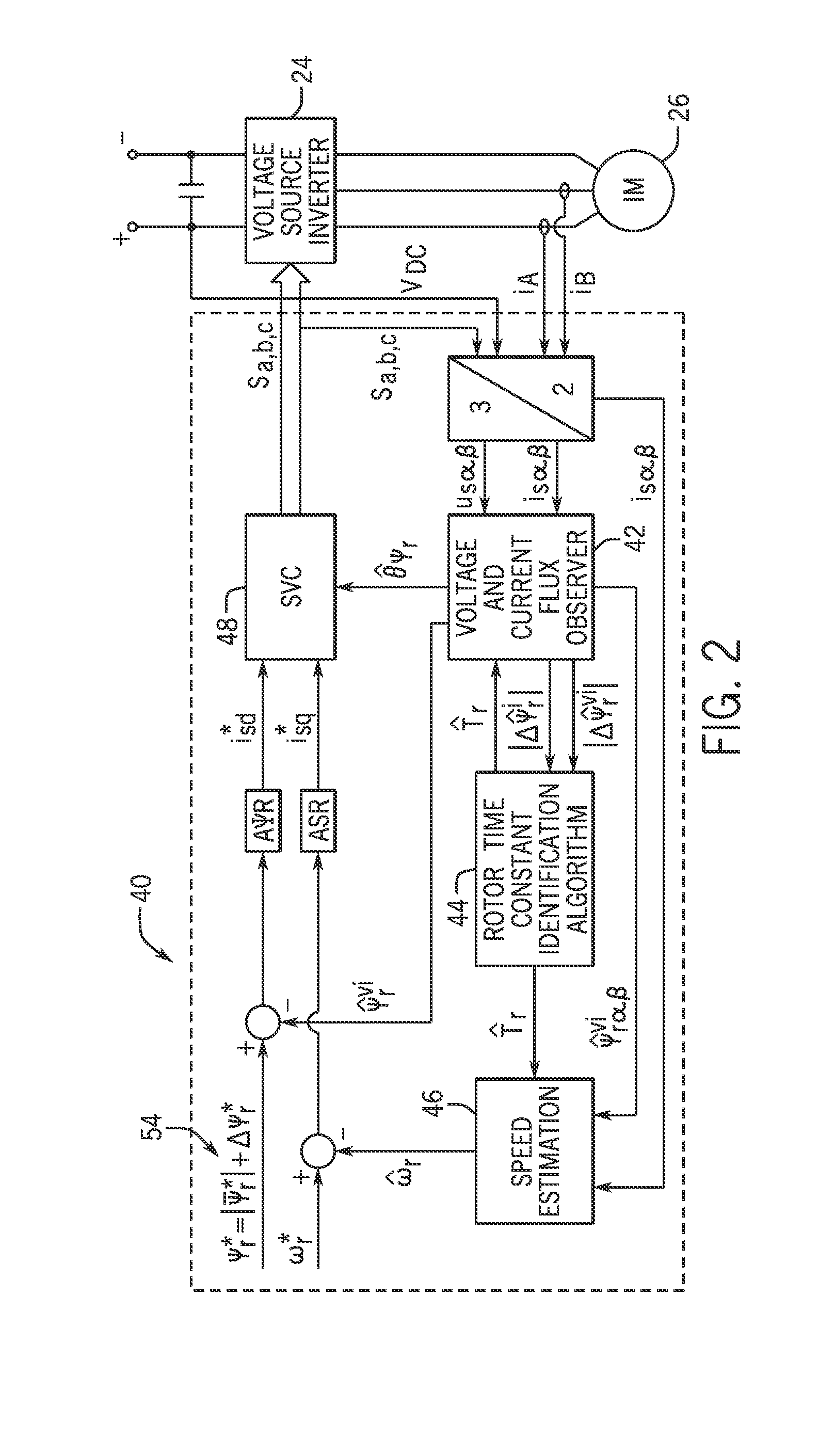System and method of rotor time constant online identification in an ac induction machine
a technology of ac induction motor and online identification, which is applied in the direction of dynamo-electric converter control, dynamo-electric gear control, dynamo-electric brake control, etc., can solve the problems of increasing computational burden, consuming a large percentage of generated electricity capacity of electric motors such as ac induction motors, and difficult to identify the rotor time constan
- Summary
- Abstract
- Description
- Claims
- Application Information
AI Technical Summary
Benefits of technology
Problems solved by technology
Method used
Image
Examples
Embodiment Construction
[0020]Embodiments of the invention are directed to a system and method that provides for the simultaneous estimation of the rotor speed and rotor time constant in an AC induction machine. According to embodiments of the invention, the estimation of the rotor speed and rotor time constant for the AC induction machine may be performed by any of a number of digital signal processing (DSP) devices, with such devices being either integrated into a motor drive associated with the induction machine or being provided as stand-alone algorithm unit and / or processing / computing device.
[0021]Referring to FIG. 1, the general structure of a motor drive 10 configured to control operation of an associated AC induction machine is shown that is useable with embodiments of the invention.
[0022]The motor drive 10 may be configured, for example, as a variable speed drive (VSD) designed to receive a three AC power input, rectify the AC input, and perform a DC / AC conversion of the rectified segment into a t...
PUM
 Login to View More
Login to View More Abstract
Description
Claims
Application Information
 Login to View More
Login to View More - R&D
- Intellectual Property
- Life Sciences
- Materials
- Tech Scout
- Unparalleled Data Quality
- Higher Quality Content
- 60% Fewer Hallucinations
Browse by: Latest US Patents, China's latest patents, Technical Efficacy Thesaurus, Application Domain, Technology Topic, Popular Technical Reports.
© 2025 PatSnap. All rights reserved.Legal|Privacy policy|Modern Slavery Act Transparency Statement|Sitemap|About US| Contact US: help@patsnap.com



